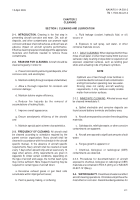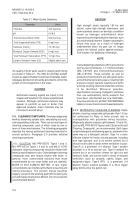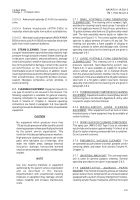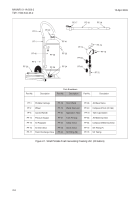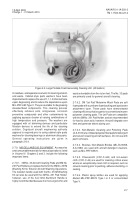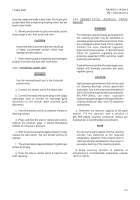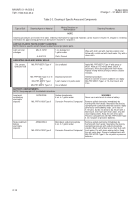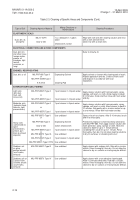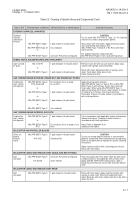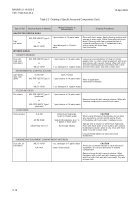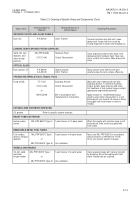TM-1-1500-344-23-2 - Page 35 of 240
2-11
NAVAIR 01-1A-509-2
TM 1-1500-344-23-2
15 April 2009
static electricity which can result in sparks and fire.
Cotton wiping cloths, such at terry cloth, flannel, or
cheesecloth, are acceptable.
b. Solvents shall not be applied with atomizing spray
equipment. This is not only hazardous, but violates
environmental regulations in most areas.
c. Keep all solvents away from open flames and any
live electrical circuit or sources of electrical arcing.
Ensure that residual solvent is removed from aircraft,
engine bays, and equipment.
d. Use solvents in well-ventilated areas. Wear rubber
gloves and chemical or splash proof goggles. Avoid
skin contact. Consult the local safety office regarding
respiratory protection.
e. Do not mix cleaning compound with any solvent
(e.g. MIL-PRF-680). The added solvents will create a
fire hazard and a serious disposal problem, and can
cause damage to nonmetallic materials.
2-9.1.4. Cleaning Solution Cautions.
a. Steam shall not be used for cleaning aircraft or
components.
b. Do not apply MIL-PRF-85570 Types I, III, IV or V,
or MIL-PRF-85704 Type I or II cleaning solutions or any
unauthorized solvents to electrical wiring or plastic
aircraft canopies, as it may cause damage to insulation
or crazing of transparent surfaces.
c. Do not use cleaning compounds at higher
concentrations than those recommended.
d. Do not allow cleaning solutions to dry on aircraft
surfaces. Such practices will cause streaking and can
damage aircraft finishes and components.
2-9.1.5. Water Intrusion Cautions.
a. To prevent entrapment of water, solvents, and
other cleaning solutions inside of aircraft parts and
structural areas, all drain holes and flap valves shall be
opened before washing, and checked again after
washing, to ensure that proper drainage occurs.
b. Do not wash or rinse aircraft with a solid stream
of water. Use a soft spray pattern to avoid damaging
fragile surfaces or causing water intrusion.
c. Water must not be directed at pitot tubes, static
ports, or vents. These areas shall be adequately
protected.
d. Relubricate all fittings and other lube points in
areas to which cleaning compounds have been applied,
such as wheel wells, flap wells, and flight control wells.
Ensure that these areas are adequately drained. Check
the specific aircraft manual to determine lubrication
requirements.
2-9.1.6. Oxygen System Cautions. Observe warnings
and cautions in specific oxygen system manuals.
2-9.1.7. Special Precautions. Use extreme care when
cleaning and related treatment is performed around
radomes, access doors to integral fuel tank cells, light
fixtures, electrical components, and antennas. These
areas may be damaged by cleaning and related
equipment.
2-9.2. PREPARATION FOR AIRCRAFT CLEANING.
A list of recommended wash rack equipment and
consumables is provided in Table 2-2.
WARNING
Open all circuit breakers associated with battery
power (refer to applicable aircraft manuals)
prior to application of any flammable solvent.
CAUTION
Cover acrylic or polycarbonate canopies during
shore based washing to prevent accidental
scratching or crazing by cleaning compounds.
2-9.2.1.Canopy. Cover canopy with flannel cloth
(A-A-50129 Type II). Cover flannel with barrier material
(MIL-PRF-131 Class 1), and tape to canopy frame or
painted surface near canopy using preservation tape
(AMS-T-22085 Type II) or masking tape (AMS-T-21595
Type III). Do not apply tape directly to transparent
surface.
Back to Top

